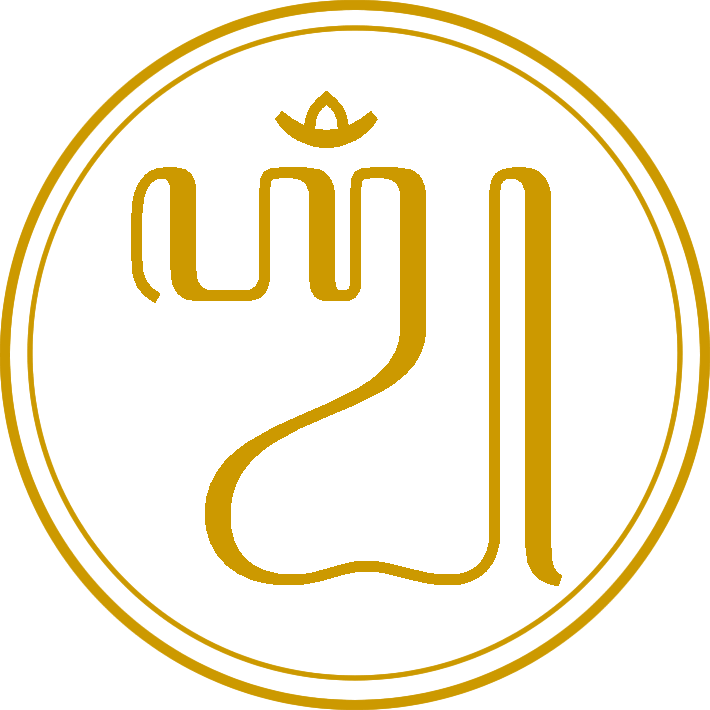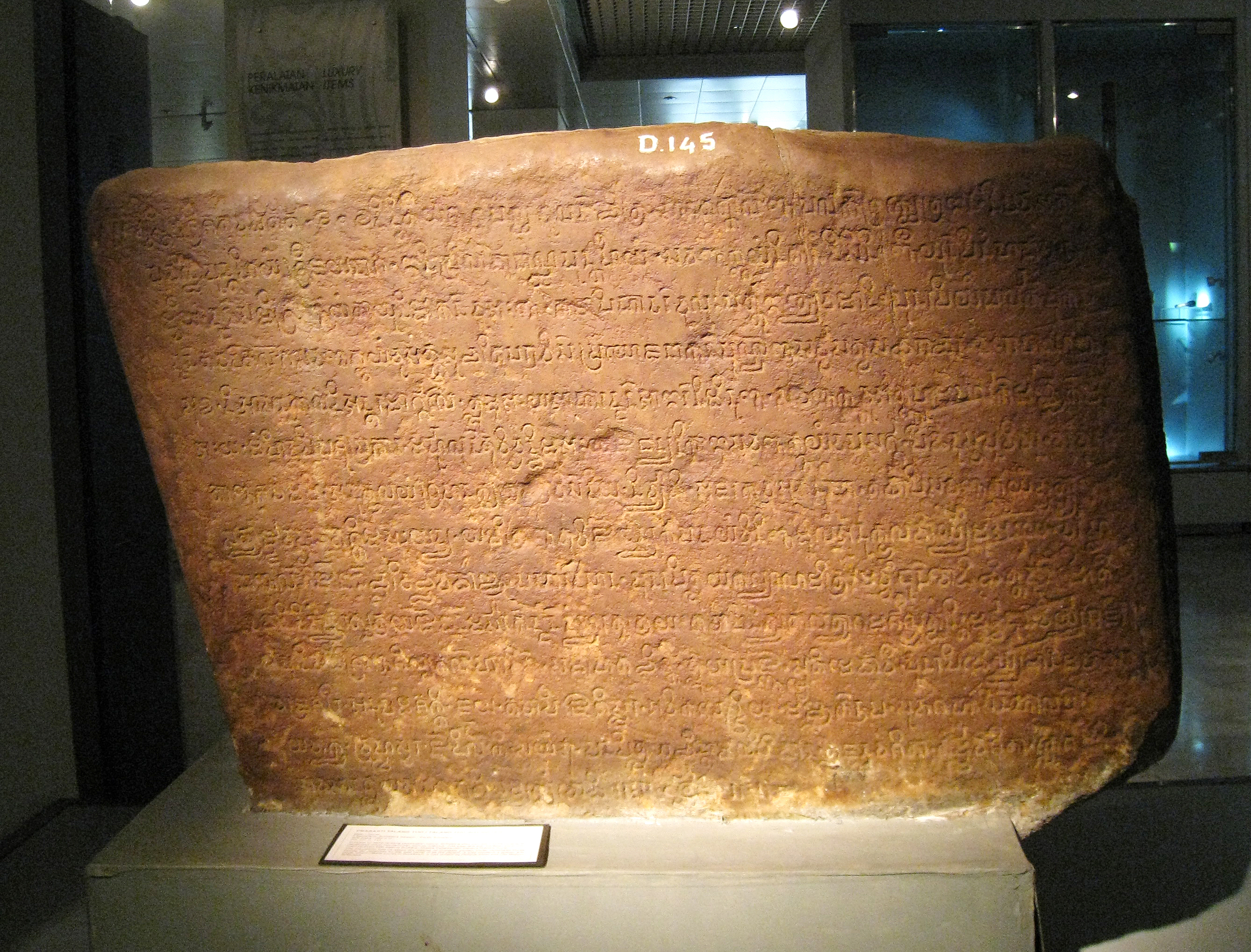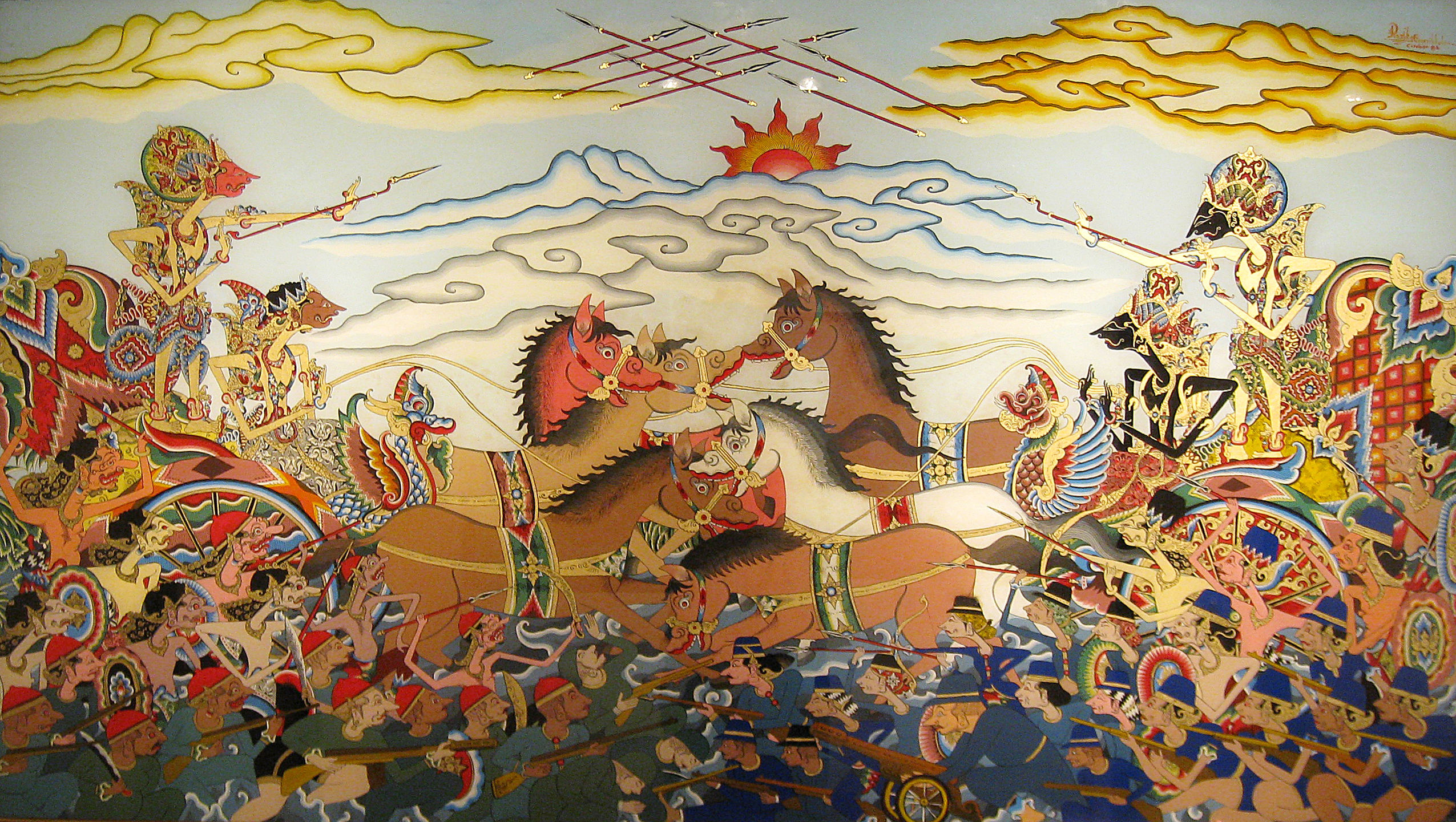|
Hyang
''Hyang'' (Kawi language, Kawi, Sundanese language, Sundanese, Javanese language, Javanese, and Balinese language, Balinese) is a representation of the King of the gods, supreme being, in ancient Mythology of Indonesia, Java and Bali mythology. The spiritual entity can be either considered Divinity, divine or ancestral. The reverence for this spiritual entity can be found in the folk religions of Java and Bali, such as the Sunda Wiwitan ( Sundanism or Cigugur Sundanism), Kejawen ( non-monotheistic Javanism), Kapitayan ( monotheistic Javanism), and Balinese Hinduism, Gama Tirta ( Balinism). The realm where ''Hyang'' resides is called the ''Kahyangan'', which is an Old Javanese term that means "the abode of ''Hyang''", "part of ''Hyang''", or "heaven". The Old Sundanese language, Old Sundanese manuscript Sanghyang Siksa Kandang Karesian, has stated that ''Hyang'' can be interpreted as "Omnipotence". Similarly, in the highest Sunda Wiwitan Spirituality, ''Hyang'' is also referred to ... [...More Info...] [...Related Items...] OR: [Wikipedia] [Google] [Baidu] |
Srivijaya
Srivijaya (), also spelled Sri Vijaya, was a Hinduism, Hindu-Buddhism, Buddhist thalassocracy, thalassocratic empire based on the island of Sumatra (in modern-day Indonesia) that influenced much of Southeast Asia. Srivijaya was an important centre for the expansion of Buddhism from the 7th to 11th century AD. Srivijaya was the first polity to dominate much of western Maritime Southeast Asia. Due to its location, Srivijaya developed complex technology utilizing maritime resources. In addition, its economy became progressively reliant on Maritime Silk Road, the booming trade in the region, thus transforming it into a luxury good, prestige goods-based economy. The earliest reference to it dates from the 7th century. A Tang dynasty Chinese people, Chinese Bhikkhu, monk, Yijing (monk), Yijing, wrote that he visited Srivijaya in 671 for six months. The earliest known inscription in which the name Srivijaya appears also dates from the 7th century in the Kedukan Bukit inscription fo ... [...More Info...] [...Related Items...] OR: [Wikipedia] [Google] [Baidu] |
Balinese Hinduism
Balinese Hinduism (; , ''Hindusmé Bali''), also known in Indonesia as ''Agama Hindu Dharma'', ''Agama Tirtha'', ''Agama Air Suci'' or ''Agama Hindu Bali'', is the form of Hinduism practised by the majority of the population of Bali.McDaniel, June (2013), A Modern Hindu Monotheism: Indonesian Hindus as ‘People of the Book’. The Journal of Hindu Studies, Oxford University Press, This is particularly associated with the Balinese people residing on the island, and represents a distinct form of Hindu worship incorporating local animism, Veneration of the dead#Indian Subcontinent, ancestor worship or ''Pitru Paksha'', and reverence for Buddhist saints or ''Bodhisattva, Bodhisattava''. The population of Religion in Indonesia, Indonesian islands is predominantly Muslim (87%).Indonesia: Religions Encyclopaedia Britanni ... [...More Info...] [...Related Items...] OR: [Wikipedia] [Google] [Baidu] |
Sunda Kingdom
The Sunda Kingdom ( , ) was a Sundanese people, Sundanese Hindu kingdom located in the western portion of the island of Java from 669 to around 1579, covering the area of present-day Banten, Jakarta, West Java, Lampung, and the western part of Central Java. The capital of the Sunda Kingdom moved several times during its history, shifting between the Galuh (Kawali) area in the east and Pakuan Pajajaran in the west. The Sunda Kingdom reached its peak during the reign of King Sri Baduga Maharaja, whose reign from 1482 to 1521 is traditionally remembered as an age of peace and prosperity among Sundanese people. According to primary historical records such as the ''Bujangga Manik'' manuscript, the eastern border of the kingdom was the Pemali River (Ci Pamali; the present-day Brebes River) and the Serayu River (Ci Sarayu) in Central Java. Most accounts of the Sunda Kingdom come from primary historical records from the 16th century. The kingdom's inhabitants were primarily the eponymo ... [...More Info...] [...Related Items...] OR: [Wikipedia] [Google] [Baidu] |
Sunda Wiwitan
Sunda Wiwitan (from Sundanese: ) is a folk religion followed by some of the Sundanese people (including Baduy & Bantenese) in Indonesia. The followers of this belief system can be found in some villages in western Java, such as Kanekes, Lebak, Banten; Ciptagelar of Kasepuhan Banten Kidul, Cisolok, Sukabumi; Kampung Naga; and Cigugur, Kuningan Regency. In Carita Parahyangan this faith is called ''Jatisunda''. Its practitioners assert that Sunda Wiwitan has been part of their way of life since ancient times, before the arrival of Hinduism and Islam. The sacred book of Sunda Wiwitan is called Sanghyang Siksa Kandang Karesian. It is a didactic text of religious and moral guidance, rules, and lessons. The text is identified as Kropak 630 by the National Library of Indonesia. According to the ''kokolot'' (elder) of Cikeusik village, the people of Kanekes are not adherents to Hindu or Buddhist faiths; they follow an animistic system of belief that venerates and worships the ... [...More Info...] [...Related Items...] OR: [Wikipedia] [Google] [Baidu] |
Acintya
Achintya (from Sanskrit: अचिन्त्य, "the inconceivable", "the unimaginable"), also known as Sang Hyang Widhi Wasa ( Balinese: "The Divine Order") and Sang Hyang Tunggal ("The Divine Oneness"), is the Supreme God of Indonesian Hinduism (formally known as ''Agama Hindu Dharma''), especially on the island of Bali. Achintya is equivalent to the metaphysical concept of Brahman of Indian Hinduism and is the Supreme God in traditional ''wayang'' ( shadow puppet) theatre. All gods, goddesses, and existence are believed to be the manifestation of the Achintya in Balinese Hinduism. Role Achintya corresponds to a rather recent trend towards monism in Bali, according to which there is one supreme deity, and that all other gods are only manifestations of him. Achintya is emptiness and considered as the origin of the Universe, all other divinities emanating from him. He is often associated with the sun god, and depicted in human form with flames around him. His nakedness e ... [...More Info...] [...Related Items...] OR: [Wikipedia] [Google] [Baidu] |
Mythology Of Indonesia
The mythology of Indonesia is very diverse, the Indonesian people consisting of hundreds of ethnic groups, each with their own myths and legends that explain the origin of their people, the tales of their ancestors and the demons or deities in their belief systems. The tendency to syncretize by overlying older traditions with newer foreign ideas has occurred. For example, the older ancestral mythology might be merged with foreign mythology, such as Hindu, Islam, or Christian biblical mythology. Foreign influences Some native Indonesian ethnic groups that were isolated from the rest of the world until recent centuries have their own native myths and gods. These native mythologies are relatively free from foreign influences, such as Torajans, Nias, Bataks, Dayaks and Papuans. By contrast, Javanese, Balinese and Sundanese were influenced by Hindu-Buddhist Indian mythology as early as the 1st century CE. Hindu gods, legends and epics such as ''Ramayana'' and ''Mahabharat ... [...More Info...] [...Related Items...] OR: [Wikipedia] [Google] [Baidu] |
Acintya Bali
Achintya (from Sanskrit: अचिन्त्य, "the inconceivable", "the unimaginable"), also known as Sang Hyang Widhi Wasa ( Balinese: "The Divine Order") and Sang Hyang Tunggal ("The Divine Oneness"), is the Supreme God of Indonesian Hinduism (formally known as ''Agama Hindu Dharma''), especially on the island of Bali. Achintya is equivalent to the metaphysical concept of Brahman of Indian Hinduism and is the Supreme God in traditional ''wayang'' (shadow puppet) theatre. All gods, goddesses, and existence are believed to be the manifestation of the Achintya in Balinese Hinduism. Role Achintya corresponds to a rather recent trend towards monism in Bali, according to which there is one supreme deity, and that all other gods are only manifestations of him. Achintya is emptiness and considered as the origin of the Universe, all other divinities emanating from him. He is often associated with the sun god, and depicted in human form with flames around him. His nakedness exp ... [...More Info...] [...Related Items...] OR: [Wikipedia] [Google] [Baidu] |
Kapitayan
Kapitayan (from ) is a Javanese monotheistic folk religion native to Java since the Paleolithic. Locally, it is referred to as "the monotheist ancient Javanese religion", "ancestral monotheist religion", or "''Tiyang Jawi'' (Javanese) religion" to differentiate it from Kejawèn (a polytheistic Javanism). Etymology The term ''Kapitayan'' is Old Javanese in origin, constructed from the base word ''Taya'' ( Old Javanese script: , ). Thus, it means that ''Taya'' cannot be thought or imagined, or cannot be approached by the five senses.Sunyoto (2017). p. 14. Belief Deity Kapitayan is teaching that worships a main deity or god called ''Sanghyang Taya'' (, meaning 'unimaginable entity'; also called ''Suwung'' (), ''Awang'' (), or ''Uwung'' ()). Sanghyang Taya is defined as ''tan keno kinaya ngapa'' (ꦠꦤ꧀ꦏꦺꦤꦏꦶꦤꦪꦔꦥ), meaning "cannot be seen, thought about, or imagined". As an abstraction that cannot be described, His existence is unreachable by worldly capa ... [...More Info...] [...Related Items...] OR: [Wikipedia] [Google] [Baidu] |
Niskala Wastu Kancana
King Niskala Wastu Kancana also known as Prabu Raja Wastu or popularly known as Wastu Kancana (c. 1348 – 1475) was one of the great kings of the Sunda Kingdom reigning throughout most of the 15th century. He was the younger brother of Princess Pitaloka. According to '' Carita Parahyangan'', he ruled for 104 years, between 1371–1475. Early life Wastu was the youngest son of Prabu Maharaja and the brother of Princess Pitaloka Citraresmi, which together, together with most of Wastu's family, perished in the Pasunda Bubat incident. In 1357, his family went to Majapahit in East Java to marry Wastu's eldest sister, Princess Pitaloka, with Maharaja Hayam Wuruk of Majapahit. As a child, Wastu however, was left to stay in Kawali palace and did not accompany his family to travel to faraway Trowulan in Majapahit. Gajah Mada, the ambitious prime minister of Majapahit, saw the event as an opportunity to demand the Sunda Kingdom's submission to Majapahit's overlordship. He demanded P ... [...More Info...] [...Related Items...] OR: [Wikipedia] [Google] [Baidu] |
Old Javanese
Old Javanese or Kawi is an Austronesian languages, Austronesian language and the oldest attested phase of the Javanese language. It was natively spoken in the central and eastern part of Java Island, what is now Central Java, Special Region of Yogyakarta, Yogyakarta and East Java Provinces, Indonesia. As a literary language, Kawi was used across Java and on the islands of Madura, Bali, and Lombok. History The oldest example written entirely in Ancient Javanese, called the Sukabumi inscription, is dated 25 March 804 AD. This inscription, located in the district of Kepung in the Kediri Regency of East Java, is a copy of the original, dated some 120 years earlier (only this copy has been preserved). Its contents concern the construction of a dam for an irrigation canal near the river Śrī Hariñjing (now shortened to Srinjing). This inscription is the last of its kind to be written using Pallava script; all consequent examples of Old Javanese are written using Kawi script. De ... [...More Info...] [...Related Items...] OR: [Wikipedia] [Google] [Baidu] |
Kawi Language
Old Javanese or Kawi is an Austronesian language and the oldest attested phase of the Javanese language. It was natively spoken in the central and eastern part of Java Island, what is now Central Java, Yogyakarta and East Java Provinces, Indonesia. As a literary language, Kawi was used across Java and on the islands of Madura, Bali, and Lombok. History The oldest example written entirely in Ancient Javanese, called the Sukabumi inscription, is dated 25 March 804 AD. This inscription, located in the district of Kepung in the Kediri Regency of East Java, is a copy of the original, dated some 120 years earlier (only this copy has been preserved). Its contents concern the construction of a dam for an irrigation canal near the river Śrī Hariñjing (now shortened to Srinjing). This inscription is the last of its kind to be written using Pallava script; all consequent examples of Old Javanese are written using Kawi script. Development Old Javanese was not static, and its us ... [...More Info...] [...Related Items...] OR: [Wikipedia] [Google] [Baidu] |







